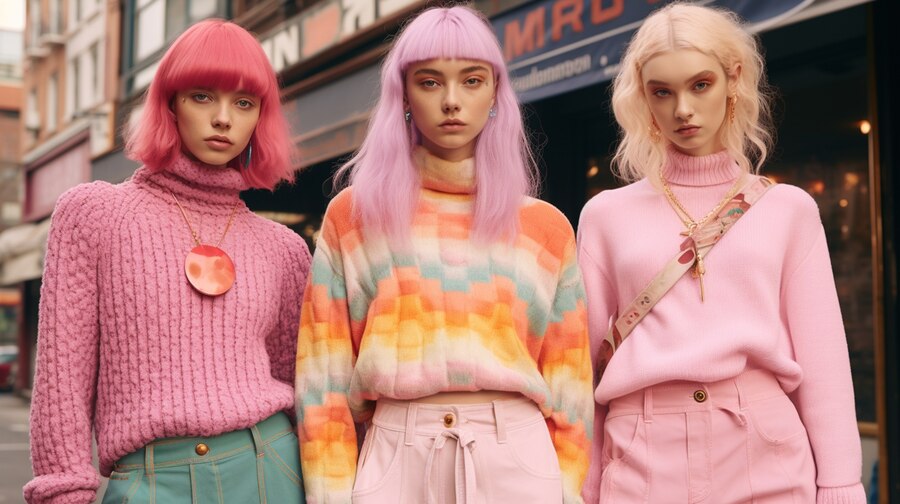Table of contents
Streetwear has undergone a remarkable transformation over the decades, evolving from a niche subculture to a powerful influence on Mainstream Fashion. In this post, we’ll explore how streetwear emerged from the fringes, the cultural movements that propelled it into the spotlight, and the trends that continue to shape its influence on everyday style.
The Origins of Streetwear
Streetwear’s roots can be traced back to the late 1970s and early 1980s when urban youth and skateboarders began embracing a casual, comfortable style that defied the traditional fashion norms. Pioneering brands and DIY aesthetics emerged in neighborhoods where cultural expression and rebellion merged, giving birth to a distinct style that would eventually challenge high fashion.
- Early Influences: Hip-hop, punk, and skate cultures played key roles in the development of streetwear. These groups used clothing as a form of self-expression, rejecting mainstream expectations in favor of bold graphics, oversized silhouettes, and athletic-inspired wear.
- DIY Culture: Early adopters often customized their apparel, turning basic items into personal statements. This spirit of individuality became a hallmark of streetwear, setting the stage for its later adoption by the broader public.
The Transition to Mainstream Fashion
Over time, what began as an underground movement steadily captured the attention of the global fashion industry. Today, streetwear is no longer confined to urban enclaves or niche communities—it has firmly established itself as a pillar of Mainstream Fashion.
Key Factors Driving the Transition
- Celebrity Endorsements: When influential artists, athletes, and entertainers began sporting streetwear brands, the movement gained instant credibility and a wider audience. Celebrities like Kanye West and Pharrell Williams played a significant role in blurring the lines between streetwear and luxury fashion.
- Collaborations with High-End Designers: Iconic partnerships, such as those between streetwear labels and established fashion houses, have further legitimized streetwear. These collaborations have produced limited-edition releases that are both coveted by collectors and celebrated on runways, bridging the gap between street and high fashion.
- Globalization and Social Media: The digital age has accelerated the spread of streetwear culture. Social media platforms like Instagram and TikTok allow trends to be shared globally, making it easier than ever for streetwear to influence Mainstream Fashion across continents.
- Cultural Shifts: As younger generations embrace authenticity and individuality, the lines between casual and couture continue to blur. This cultural shift has paved the way for streetwear’s integration into everyday wardrobes, further cementing its role in the fashion industry.
The Impact on Fashion Trends Today
Streetwear’s journey from the margins to the center stage of Mainstream Fashion has redefined the way we perceive style. Here’s how its influence is evident in today’s trends:
- Casual Luxe: Designers are increasingly merging comfort with luxury. Premium fabrics, innovative cuts, and eye-catching designs have given rise to the “casual luxe” movement—a style that reflects streetwear’s impact on Mainstream Fashion.
- Athleisure Dominance: The rise of athleisure as a dominant trend is a direct offshoot of streetwear’s focus on functionality and style. Athletic wear has transcended its gym origins to become everyday fashion, embraced by both men and women worldwide.
- Gender-Neutral Fashion: Streetwear has championed inclusivity and fluidity, challenging the traditional gender norms in fashion. Unisex designs and gender-neutral collections are now common in Mainstream Fashion thanks to this progressive influence.
Cultural and Economic Influences
The evolution of streetwear is not just a fashion story—it’s also a cultural and economic narrative. As the movement gained traction, it influenced consumer behavior, brand strategies, and even global markets.
- Consumer Empowerment: Today’s consumers seek authenticity and storytelling in the brands they support. Streetwear brands that embrace social and cultural narratives resonate deeply with a younger, diverse audience.
- Economic Impact: With the rise of limited-edition drops and exclusive collaborations, streetwear has carved out a lucrative niche within the fashion industry. The secondary market for rare items continues to drive consumer interest and investment, making streetwear a significant player in Mainstream Fashion economics.
Frequently Asked Questions (FAQs)

Streetwear originated as a style associated with urban youth, skateboarders, and hip-hop culture. It emphasizes casual, comfortable clothing with an edge of rebellion, and it has evolved into a major influence on Mainstream Fashion.
Streetwear’s integration into Mainstream Fashion can be attributed to celebrity endorsements, high-profile collaborations with luxury brands, and the global spread of trends through social media and cultural shifts toward authenticity.
Brands like Supreme, Off-White, and A Bathing Ape were among the pioneers that influenced the rise of streetwear. Their bold aesthetics and innovative designs challenged traditional fashion norms and paved the way for their acceptance into Mainstream Fashion.
Social media platforms have played a critical role in the rapid dissemination of streetwear trends. They have allowed influencers and consumers to share styles instantly, contributing significantly to the integration of streetwear into Mainstream Fashion.
Expect further blending of casual and luxury elements, increased focus on sustainability, and even more gender-neutral collections as streetwear continues to shape Mainstream Fashion. The focus on authenticity and cultural storytelling will likely drive future innovations.
Conclusion
The evolution of streetwear from a subculture to a dominant force in Mainstream Fashion is a testament to its enduring appeal and adaptability. As we continue to witness new trends and innovations, streetwear’s impact on the global fashion landscape shows no signs of waning. By understanding its history and ongoing evolution, consumers and designers alike can appreciate how this once-niche movement now sets the pace for modern style.





